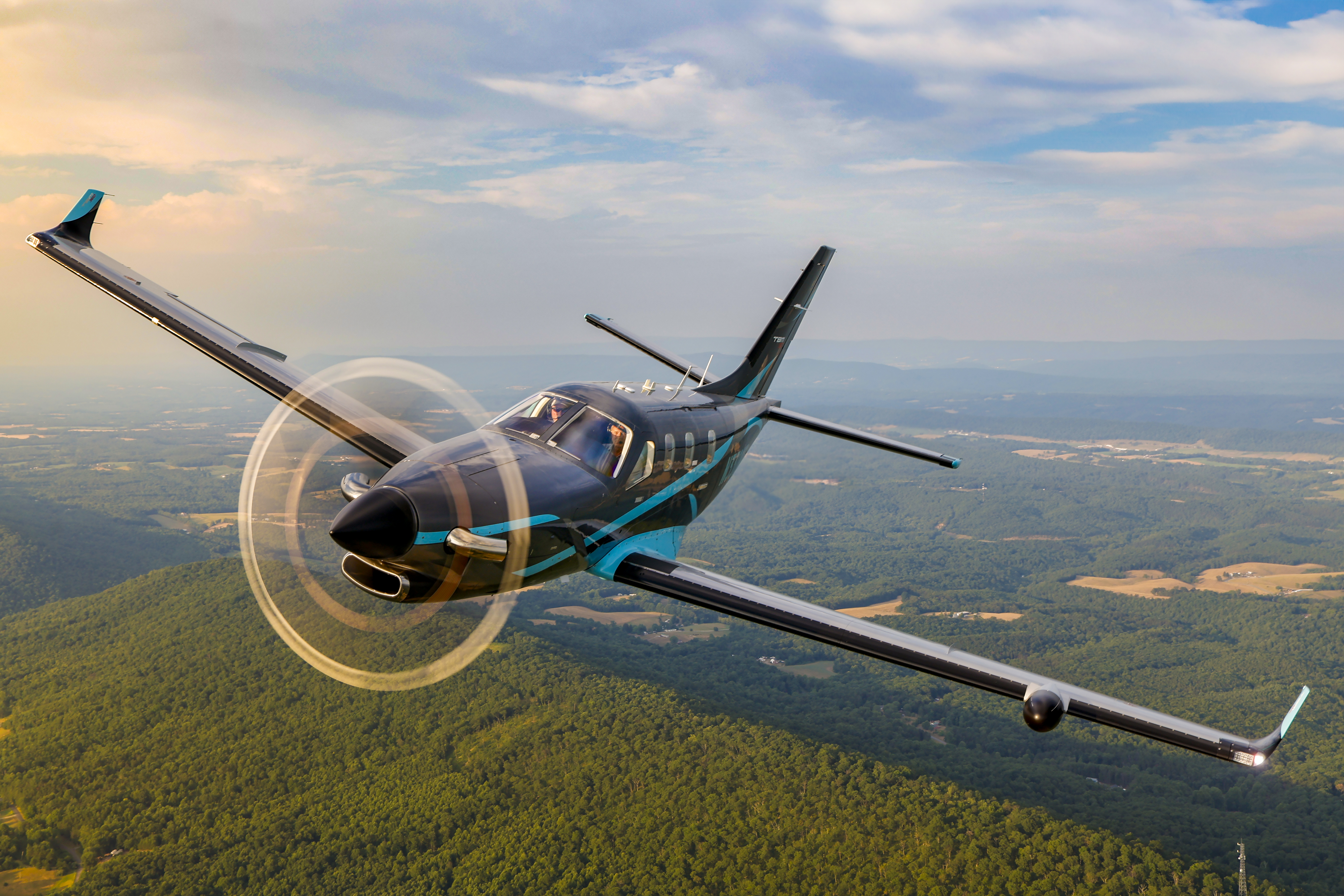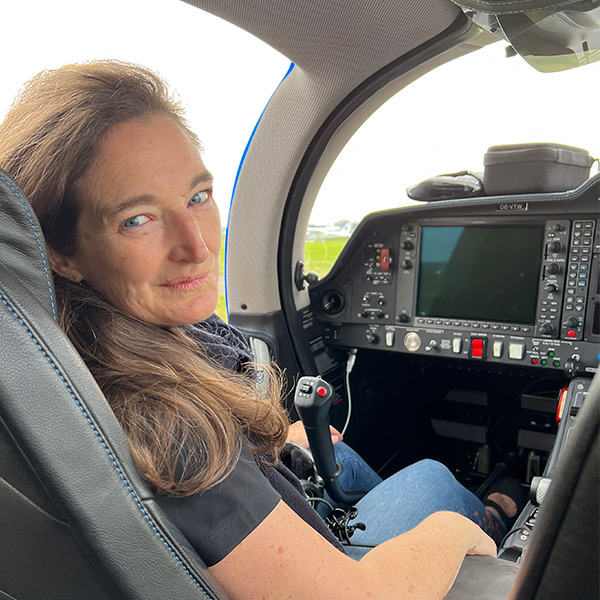Moment of Zen
Choosing the right aircraft for the mission
There are so many airplanes out there to love—why not appreciate each one for its singular worth?

There are so many airplanes out there to love—why not appreciate each one for its singular worth?
In several decades of flying, Malte Lorenz has owned a succession of aircraft, including helicopters, taildraggers, warbirds, turboprops, and jets, with long-term favorites such as the AirCam on amphibious floats, and the T–28. For his aircraft management and Part 135 charter business, he’s flown another wide range of aircraft—right now, a Gulfstream G450, G550, and G650 and a Dassault Falcon 900 and 2000LX. As a helicopter tour pilot, he’s provided VIP transport in twin turbine rotorcraft like the Sikorsky S-76D he currently flies. He even operated a Cessna Caravan on floats for Lehman Brothers out of the East River in Manhattan for many years.
For personal travel, he’s tried a Pilatus PC–12 NGX and a Cessna Citation Mustang, among others. But after finding the Daher TBM 930, he had settled on the fast turboprop that best fit his mission in range, payload, and efficiency.
But the newest model beckoned. Lorenz admits that he may have bought the 2024 demo TBM 960 at Daher’s display at Sun ’n Fun Aerospace Expo for the color alone. “It’s not always straightforward analytical thinking,” he says. And when you see the airplane on the ramp, with its swirling turquoise ribbon over a field of elegant black and charcoal gray (signature colors in Lorenz’ past aircraft, including a GIV), you get that. We buy on emotion more than we credit. And to be fair, he already knew the 960 would be a great fit (he’s 6 feet 3 inches). A newly purchased one would also gain certain tax benefits for him.
I flew with Lorenz on a series of flights. As a FAST card holder, current T–34 pilot, and former member of the Trojan Thunder T–28 Demo Team, he was well qualified to fly left seat as we circled the setting sun over the Appalachians of western Maryland. The next day, we flew from the Hagerstown Regional Airport (HGR) in Maryland for the photos accompanying this story to his base at Republic Airport (FRG) in Farmingdale, New York, for a hangar tour.
Choices, choices
Lorenz has logged his 22,000-plus hours in dozens of aircraft types, in series and in concert as both an owner and commercial operator. But his life as a pilot began where many start: at an aviation program in college. Obtaining his private certificate at Nathaniel Hawthorne College in New Hampshire, he departed the structured course. He built enough time to hire on with PBA in 1982, flying aircraft such as the YS11 and Martin 404, to be followed by Continental Airlines acting as an MD-80 captain at the young age of 28 through the serendipity created by mergers. Along the way, he picked up a helicopter rating, and a floatplane rating, and began to moonlight flying a handful of his Long Island neighbors around.
One of those friends was a well-known fashion mogul, seeking to buy her first airplane in the mid-1980s. She asked Lorenz to manage and fly the Hawker, then the GIV she eventually bought—and after a couple of years made him the “offer he couldn’t refuse” to quit his “day job” flying for the airlines and go full time into aircraft management. He hasn’t looked back since. First established as Maltaire, his current operation—later to be rebranded as Zenflight—offers true concierge style service to its elite deck of clients. The name Zenflight fits Lorenz’ demeanor in the cockpit: relaxed yet not presumptuous, and with a modest ego.
For this particular calculus, Lorenz looked at the 960 against a Cessna Citation M2. “I enjoyed flying the Mustang, and M2 is a great step up from that.” But with program fees that clocked in at several hundred dollars an hour “just to turn the key,” he wanted something more cost effective—especially since he normally flies himself and just one or two other passengers. With a home in Boca Raton, and office in New York, he can make the cross-country to Republic nonstop at 330 knots in the TBM, and at about half the fuel burn of the M2. Yes, it means one engine versus two, but with the track record of the Pratt & Whitney PT6 series, it’s nearly a moot point. There are those who require two turbine engines, for insurance or personal reasons, but that’s not his profile.
Using the checklist
One of the features of the Garmin G3000 and its variants across turboprop/turbine models in the class is the electronic, Crew Alerting System-linked checklist function built into the system for access on the primary and multifunction displays. While some installations require checking off items on the bezel or through a roller ball/mouse on the panel, the TBM 960 places a “check” button on both yokes for ready access.
One reason why pilots fail to use the embedded checklists rolls all the way back to the first ones we were handed for the training airplane we were learning. In every instance, I’ll wager, some instructor or owner somewhere along the line made modifications to that checklist. While some edits stem from added equipment, others derive from the particular logic that a pilot applies to their airplane as they get to know it. From this experience, they craft a printed version that suits them. As we started up for the first time at Hagerstown, Lorenz unwittingly gave an excellent example of why this is so. In several turbine aircraft he flies that require flaps set for takeoff, the checklist item to position them comes prior to taxi. As it happens, the OEM checklist for the 960 puts this flap setting in the place most often seen in piston aircraft (lower to the ground, generally, than a Falcon 900 or G650): just before taxiing on to the runway. Because of his habit, he’s made a special notation on his paper checklist—the “final items”—for the TBM to check the flap setting, to make sure they are in the takeoff setting appropriate to the conditions.
Another key safety feature embedded into the G3000 architecture is its weight and balance planning matrix. Having the program right there to make changes served us well when on one segment, additional people showed up unexpectedly and wanted to come along for the ride. This happens all the time to owners in this class. Lorenz had topped us off for the journey, and when he adjusted the passenger load on the touchscreen controller, it indicated not only an overweight takeoff condition (annunciated by turning the figure to yellow text) but also a total above the zero-fuel weight (also in yellow). We apologized to the friends, who took it well—but this could also serve as a pilot’s tool in the event they felt pressured to depart with an overloaded condition.
Hand flying
Flying often in the Northeast corridor as he does, Lorenz is accustomed to accepting flight levels lower than the altitude at which the TBM 900 series finds its greatest speed and efficiency, FL280, where it will see 330 knots at 64.9 gph, according to the POH. For his flight up to Maryland from Boca he spent most of the route at FL230 at 250—not bad. For our back and forth to FRG from HGR, we were punished with altitudes that barely broke FL190. And that was only for a few minutes, until we switched approach controls and had to descend back down.
Fortunately, the TBM isn’t as penalized by having to go lower, as opposed to the Citations or larger hardware Lorenz is used to flying. A lower altitude in the Mustang might cause him to go fuel critical quickly—and sometimes at the end of a trip where it really hurts. This formed one of his top reasons for choosing the single-engine turboprop: The fuel delta isn’t as large with one engine that generally meters gas wisely, and the speed penalty isn’t as bad either. For a short (less than 1 hour) trip typical when he’s flying around the region, it makes even more sense.
For our routing to Republic, the initial “advise when ready to copy” alphabet stew created a near sine wave to keep us ostensibly out of New York airspace between Lancaster, Pennsylvania, and Long Island. Fortunately, like most brain-squishing clearances you scribble down on the ramp, this one straightened out with each successive controller, never quite taking us north of Allentown. With a persisting coastal layer keeping FRG under the hat shelf, Lorenz shot the approach to 400 feet msl and 3 miles visibility underneath. “Zenjet 1” had landed for the first time at its new base in the Northeast.
In all, this year’s 960 sets the bar a notch higher than the already tough-to-beat TBM 900 series.
Landing short-ish
Another advantage showed its hand as we made the descent back into Hagerstown. Our routing to western Maryland took a far straighter line, given the light traffic at HGR.
For the last 30 minutes of the flight, we’d been watching a line of thunderstorms that still hesitated over the Appalachians well west of the field. But we’d also noted the winds on the ground had been sustained at 23 gusting to 30 knots all afternoon, out of the south. With a main runway alignment of 9/27, this presented a direct crosswind. Fortunately, HGR has a shorter crosswind runway, 3,000 feet long—well within the grasp of the TBM even without the headwind on final. Still, as Lorenz pointed out, “This is going to look short.” Being based there, I know its markings also make it appear smaller and stubbier to those not used to it.
In any event, it was great motivation to click off the autopilot early and keep excellent speed control on final. At 85 knots indicated on short final with the headwind, we felt super slow. But since speed creep—and the too-fast approach—remains a particular area of concern for TBM pilots, it was worth watching. Lorenz did a textbook roundout and the wheels spun on just beyond the numbers. We rolled through the crossing runway about halfway down 20, but we could have made it as a turnoff.
New stuff in 2024
For the 2024 version, Daher took in feedback from its owner group and returned the popular landing light to the nose gear. Also, there’s a pilot incapacitation algorithm added to the Home Safe matrix: If the pilot doesn’t respond to annunciations at 30, 33, and 36 minutes, after a total of 39 minutes, the Garmin Autoland function triggers unless clicked off by a pilot returning to an alert state.
Daher added several requested annunciations to the G3000, along with updates to the Safe Taxi/Surface Watch functions. These bring greater context to ground operations on the primary flight display, with hard-to-miss graphics popping as you roll down the taxiway and cross intersecting runways. In today’s environment these feel like very welcome enhancements, indeed—especially for the single-pilot operations standard amongst the TBM crowd. In all, this year’s 960 sets the bar a notch higher than the already tough-to-beat TBM 900 series.
Julie Boatman is an editor, flight instructor, and author/content creator. She holds an airline transport pilot certificate with Douglas DC–3 and Cessna Citation Mustang type ratings.







